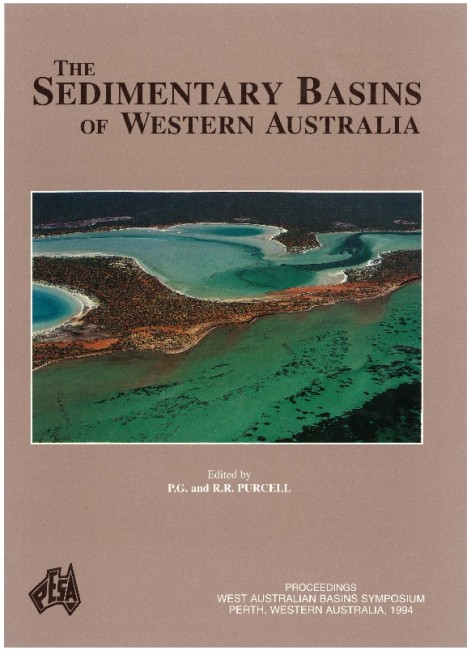Publication Name: The Sedimentary Basins of WA
Authors: P.W. Baillie, C. McA. Powell, Z.X. Li and A.M. Ryall
Publication Volume: 1
Date Published: July 1994
Number of Pages: 29
Reference Type: Book Section
Abstract:
The development of Western Australia's sedimentary basins over the past 1000 million years can be related toan integrated seven-stage tectonic framework. From near the end of the Mesoproterozoic until approximately 700 Ma, Western Australia lay in an intracontinental position within the supercontinent Rodinia. Around 700 Ma, Rodinia broke up and Laurentia began to separate from Australia- Antarctica giving birth to the Palaeo-Pacific Ocean.
During the late Neoproterozoic, the low-latitude Marinoan glaciation preceded an interval of intracontinental dextral shear along the PatersonPetermann tectonic zone from approximately 600 Ma until the end of the Precambrian. Renewed continental breakup on Australia's Pacific margin and off the northwest of Western Australia in the latest Precambrian was followed by sag-phase deposition in central and southern Australian basins, prior to subduction along the eastern margin of Australia in the Middle and Late Cambrian. Extension at the beginning of the Ordovician led to the inception of the Canning Basin as the on-strike continuation of the west-northwesterly-trending Amadeus Basin. Multiple orogenic events in eastern Australia from the end of the Ordovician to the Early Devonian were reflected in lesser movements and facies changes in the Canning, Carnarvon and Bonaparte basins.
Beginning in the Middle Devonian, transpression in the Arunta Complex in central Australia linked with transtension along the northern Canning Basin gave renewed vigour to sedimentation in the Fitzroy Trough and Carnarvon Basin, which persisted until uplift accompanied by deformation terminated sedimentation
in mid-Carboniferous times.
Sedimentation resumed in the Late Carboniferous following meltout of an extensive continental ice sheet that formed in the Namurian and lingered on into earliest Permian times. Permian sediments in the southern part of Western Australia were deposited as part of a broad sheet of continental clastics draining towards the shelfedge in northern India and northwestern Australia.
In the Late Permian, renewed rifting along the Precambrian Darling Fault and mild compression in the Canning Basin are associated with the pre-breakup rifting of Pangea. Subsequent breakup along the northwest Australian margin in the Late Jurassic is part of the earliest breakup of Pangea, and led to the formation of the Argo Abyssal Plain, the oldest of Australia's current continental margins.
Antarctica began to separate from Australia from the latest Jurassic, and in the earliest Cretaceous, Greater
India began to rotate northwestward away from Australia creating the Gascoyne, Cuvier and Perth abyssal plains in its wake.
Slow seafloor spreading commenced in the Southern Ocean at about 95 Ma and continued until approximately
43 Ma when a change in global plate rotations transferred the spreading between Australia and India to the south of Australia. The Southern Ocean became fully open to circulation between Australia and Antarctica in the
Oligocene, as Australia moved north towards the festoon of island arcs which extended east from Indonesia.
Australia collided with the SundaArc subduction zone in the mid-Miocene, and thereafter has been subject to
sinistral torsion at its northern margin. The torsion led to dextral shear along many of the older fractures near
the continent-ocean boundary, transforming former extensional basins with superimposing late-stage
transtensional and transpressional structures.


